How We Built Our Own Bulwarks
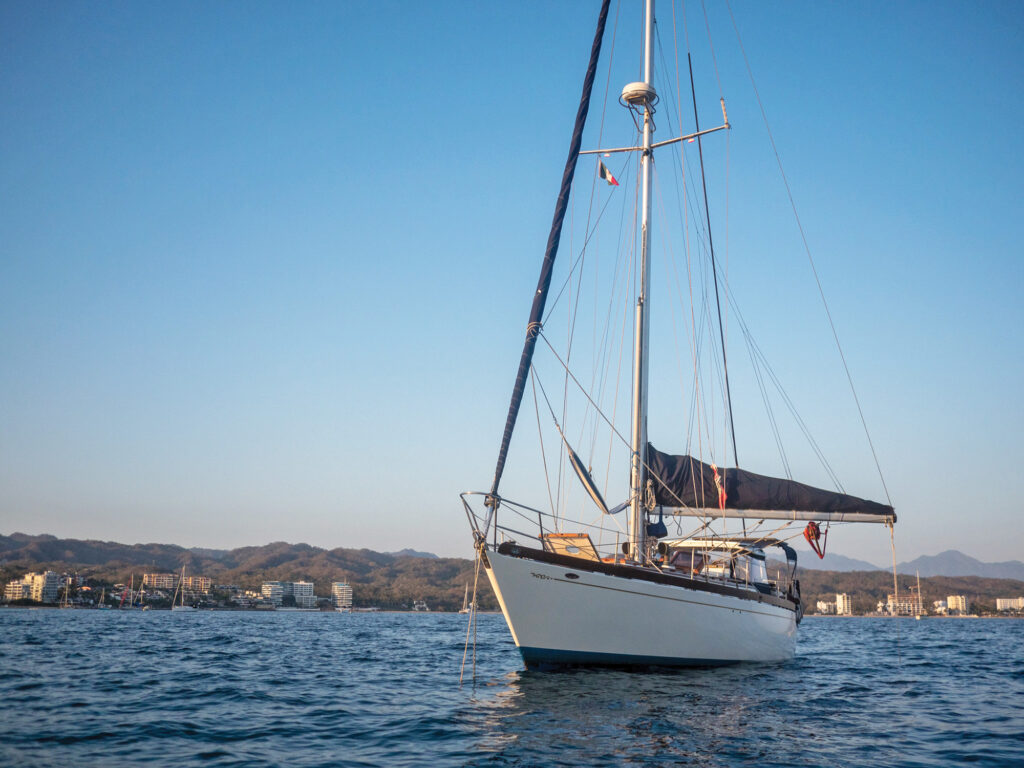 Avocet anchored in La Cruz de Huanacaxtle, Mexico, sporting its bulwark in the sunset.
Marissa Neely
Avocet anchored in La Cruz de Huanacaxtle, Mexico, sporting its bulwark in the sunset.
Marissa Neely
The most notable upgrade that my husband, Chris, and I have done aboard our 41-foot, 1979 Cheoy Lee, Avocet, since we bought her in 2018 is replacing her toe rail with a bulwark. This project changed not only the aesthetic of our boat’s design, but also the physical construct, making her deck and hull stronger than ever.
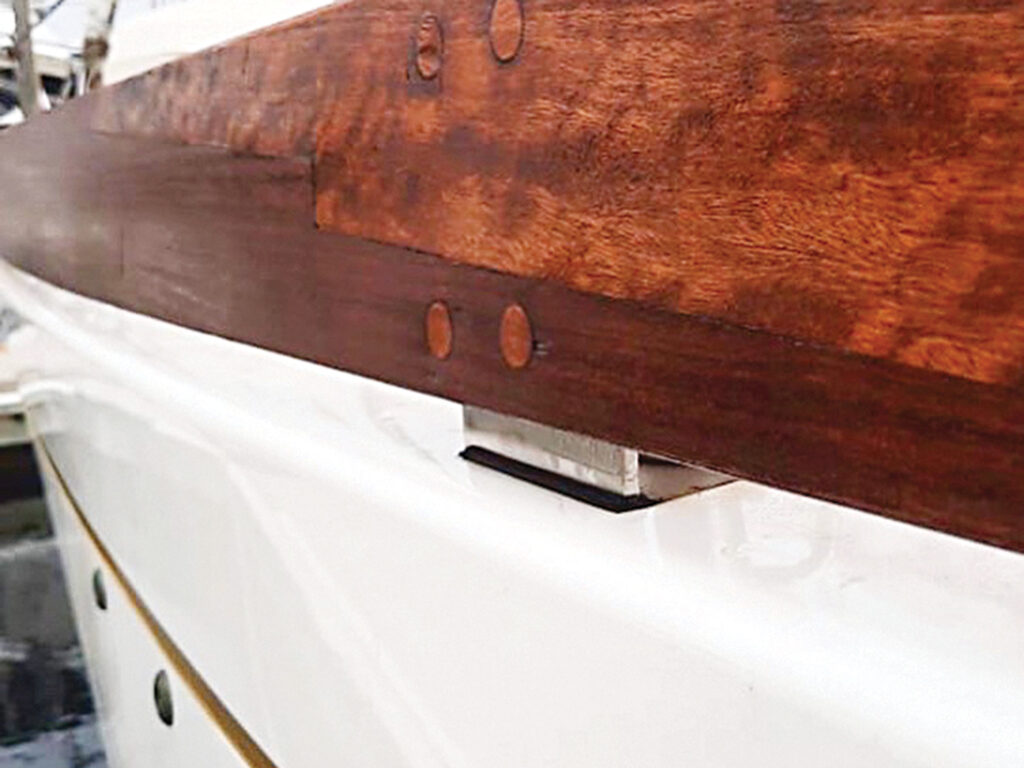 A close-up of the finished bulwark.
Marissa Neely
A close-up of the finished bulwark.
Marissa Neely
A conversion like this one includes many technical layers that combine naval design, carpentry, metalwork and a whole lot of patience. For starters, our research revealed that there is a lot of confusion about what defines a toe rail and a bulwark. After some internet deep dives, and discussions with boatwrights and naval architects, we concluded that a toe rail is a piece of wood, aluminum or fiberglass that usually does not exceed more than 3 inches tall and that is bolted, every few inches, through the deck. Anything bigger (which typically is bolted to the stanchions) is called a bulwark.
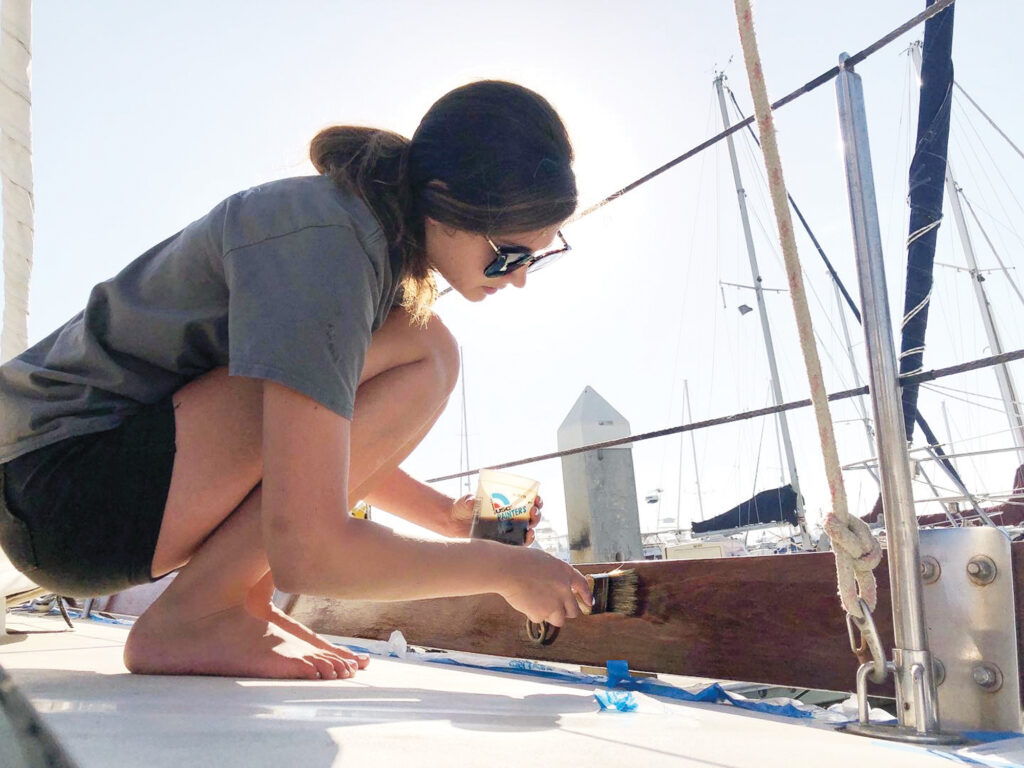 Marissa takes a turn at the oiling process
Marissa Neely
Marissa takes a turn at the oiling process
Marissa Neely
Sailor and author John Kretschmer notes that when choosing an offshore cruising boat, it’s best to consider a vessel with a “deck-to-hull joint that does not rely on bolts, screws, rivets, or adhesive for strength or watertightness.” He notes that the idea is to eliminate potential leaks.
With all of this in mind, we explored how we could implement a strong bulwark and increase Avocet’s bluewater standard. Avocet’s teak toe rail was (at one point) structural, connecting the deck-to-hull joint with through bolts every 6 inches. Over time, the bolts corroded because of dissimilar metals, leaving numerous voids where water leaked through, creating a mess of problems belowdecks. To repair this damage, we had to remove the toe rail and then decide how to proceed with a replacement.
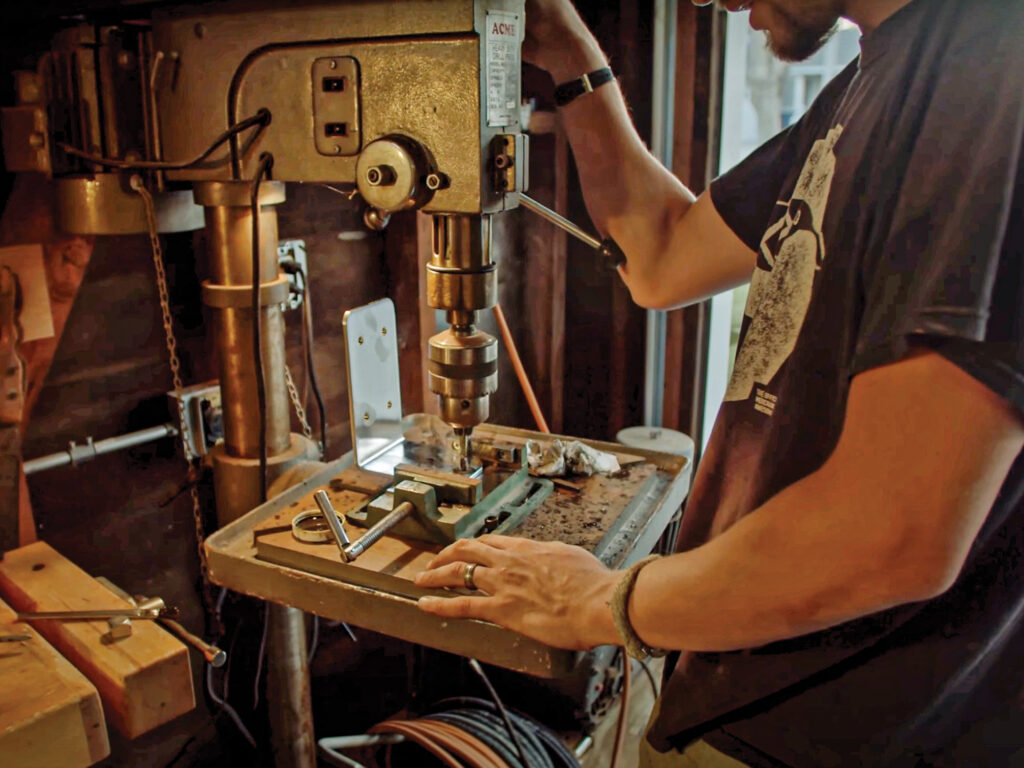 Chris employs a friend’s drill press to create mounting holes for the bulwark bases.
Marissa Neely
Chris employs a friend’s drill press to create mounting holes for the bulwark bases.
Marissa Neely
Choosing the bulwark option let us glass a seamless deck-to-hull joint that would reinforce the interior glass, as well as reconcile the damage, further eliminating the need to rebolt. Our deck-to-hull joint was not initially glassed externally because the process is labor-intensive and expensive. Avocet’s era of boats were primarily built economically, in Hong Kong and Taiwan, and the quicker approach is to construct a toe rail and bolt it. This solution is fine as long as the hardware is not corroding.
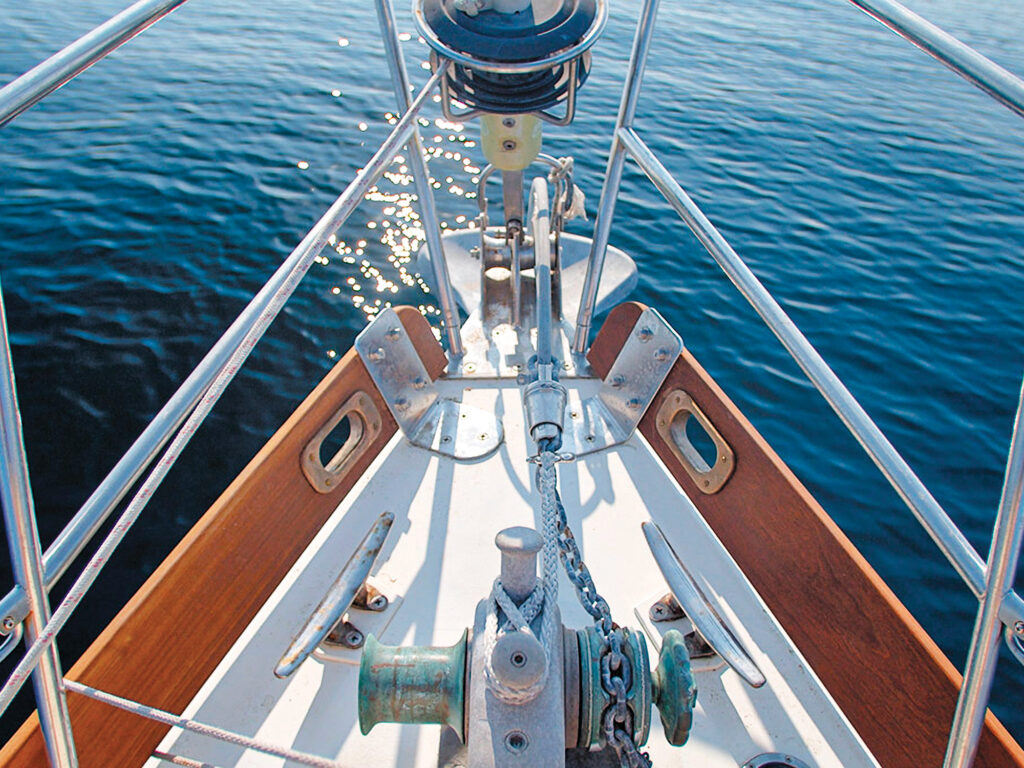 The finished bulwark bases fit nicely.
Marissa Neely
The finished bulwark bases fit nicely.
Marissa Neely
For three months, Chris and I spent hours glassing, designing, fabricating and constructing our bulwark, which incorporated many design aspects influenced by the Bristol Channel Cutter. The bulwark bases were 316 stainless L brackets that we recessed into the deck so that they would sit flush below the stanchions. Each bracket was a unique bend measurement to anticipate the curve of Avocet’s hull, allowing the wood to conform and naturally continue the angle of the hull above the deck.
Next, we began to work on the wood that would be mounted to the brackets. We wanted to use teak at first, but our wallets did not agree, so we researched rot-resistant hardwoods such as white oak, purpleheart, black acacia and mahogany. A contractor pointed us toward cumaru, also known as Brazilian teak.
Chris spent days prior to the wood’s arrival studying various scarf joints to choose the best method to join the three sections of wood together into a single 42-foot board. He settled on a mechanically fastened plated scarf joint that would be 32 inches long. Chris used an accurate combo square, circular saw, Japanese handsaw, sharp chisels, assorted drill bits, 316 stainless hardware, and marine glue to construct the bulwark plank.
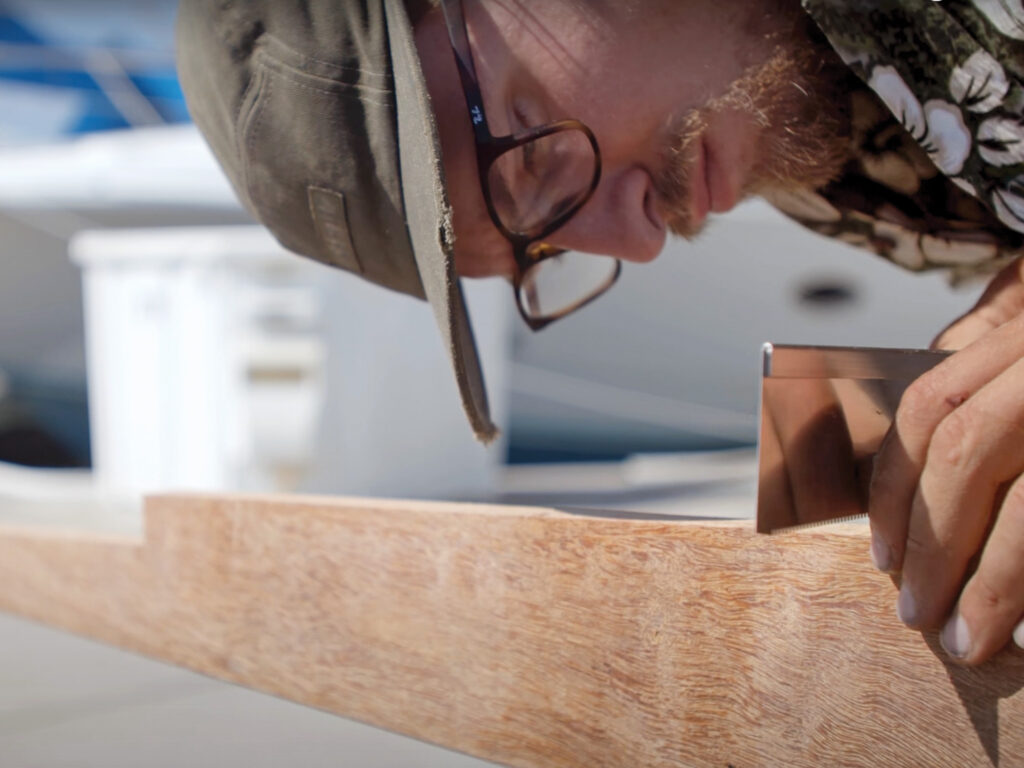 Chris refines the scarf joint using a Japanese handsaw.
Marissa Neely
Chris refines the scarf joint using a Japanese handsaw.
Marissa Neely
Sixty-four stainless-steel fasteners later, we had bulwarks. The wood added a hint of timeless design to Avocet, in a nod to our favorite classic yacht designers.
The final pieces to be installed were the hawseholes to replace our fairleads, which we felt did not do the overall hull design justice. Our cast-bronze hawseholes completed the design.
When the project was complete, we broke free of our dock lines and made a mad dash to the Channel Islands so that we could enjoy our boat the way she was intended. Water splashed the deck, washing overboard immediately under the bulwark through the slim gap. It was perfect. The height of the bulwark made it easy to stow jerry cans, fenders, lines and even the dinghy without clutter.
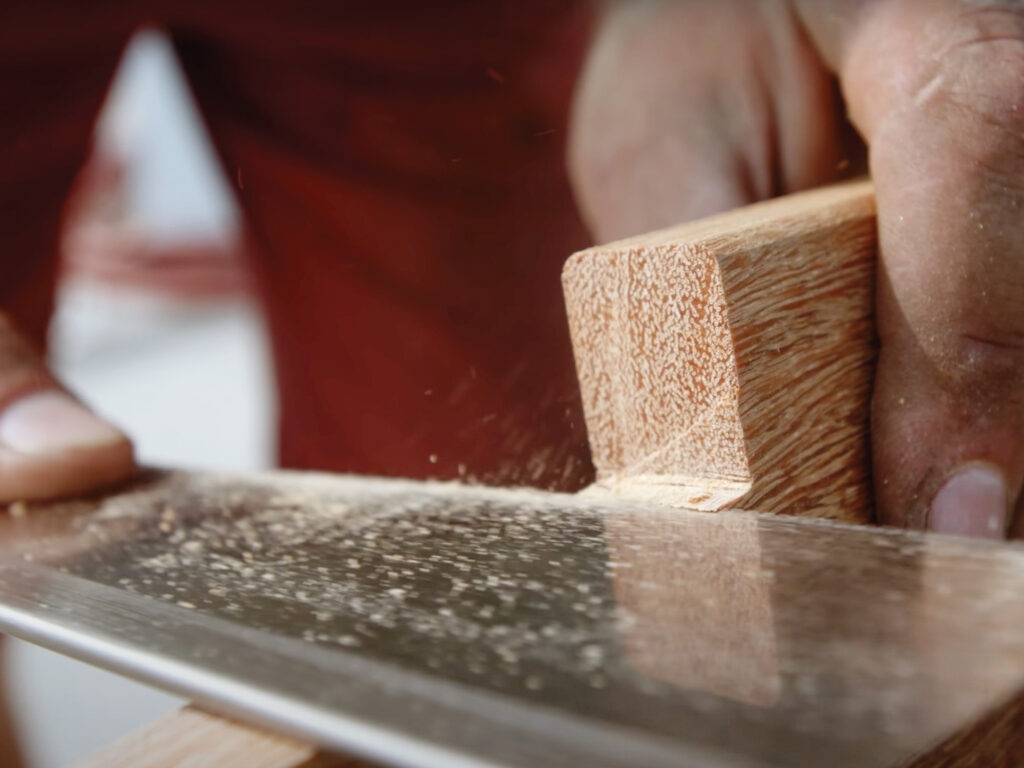 A close-up of the scarf-joint refinement process.
Marissa Neely
A close-up of the scarf-joint refinement process.
Marissa Neely
This conversion was a long process, but we are pleased with the outcome. As Kretschmer writes: “No other man-made object blends design, craftsmanship, passion and pure optimism the way a sailboat does. With a good sailboat, anything is possible.”
For more details on our bulwark conversion, visit our website, svavocet.com, or check out our YouTube channel, Sailing Avocet.
The post How We Built Our Own Bulwarks appeared first on Cruising World.
- Home
- About Us
- Write For Us / Submit Content
- Advertising And Affiliates
- Feeds And Syndication
- Contact Us
- Login
- Privacy
All Rights Reserved. Copyright , Central Coast Communications, Inc.